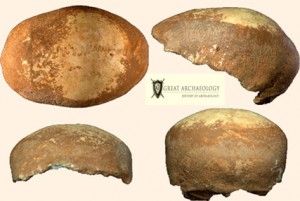55,000-Year-Old partial modern Skull exposed in Israel
A 55,000-year-old partial modern human skull has been exposed in Israel’s Manot Cave,the human skull which supports existing theories of modern human progression and migration. The skull is anatomically related to that of modern humans.
The findings could give the scientists applicable latest insights on when the modern humans first started interbreeding with the Neanderthals.
According to the scientists, the modern humans first appeared between 150,000 and 200,000 years ago in Africa.
The scientist says that the modern humans started to abscond Africa and explore other regions between 60,000 and 70,000 years ago.
Researchers say that this mass dispersion still remains a scientific mystery because there are very few human fossils as proof from those times.
Researcher have newly a discovered 55,000 year old skull in Israel, which they believe, dates back to the times when recent humans started to expand out of Africa and migrate towards what is now known as Europe.
The experts who analyzed the skull remains report that the anatomy of the fossils may suggest some clues on how the early Europeans looked like.
The skull fossil was unearthed by accident in 2008, when a bulldozer was digging as part of a building project and came across a cave.
The skull was exposed in a cave in Manot, located in the northern side of Israel.
The cave had its entrance sealed by rocks which covered it about 30,000 years ago.
Ofer Marder, one of the authors of the new study, said that for more than 30,000 years the cave has been reserved like a time capsule.
This skull fossil was named Manot 1 and features only the top fraction of the skull, known as the skullcap.
According to Bruce Latimers, a paleontology expert at the Case Western Reserve University in Cleveland , the skull enclosed a brain of about 1,100 milliliters, a relatively small brain compared to that of a modern human, which is measures about 1,400 milliliters.
